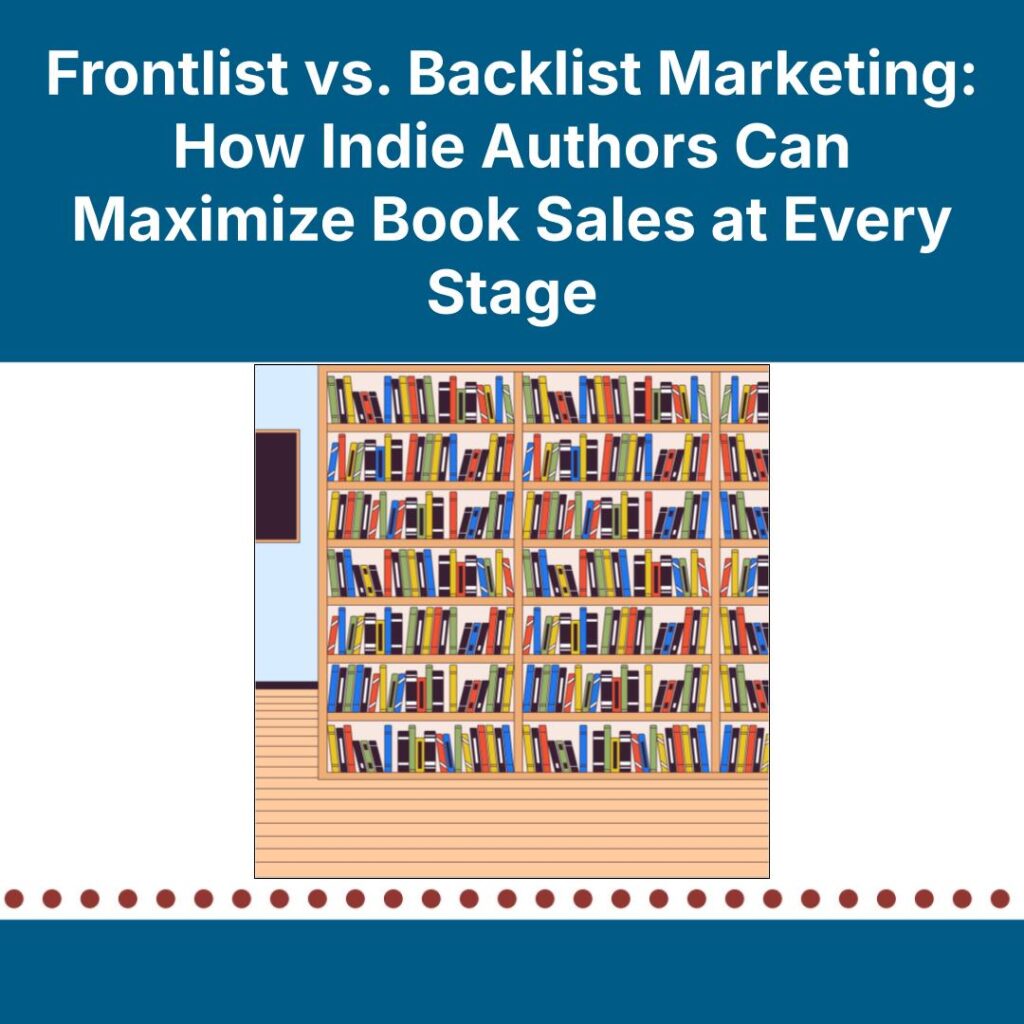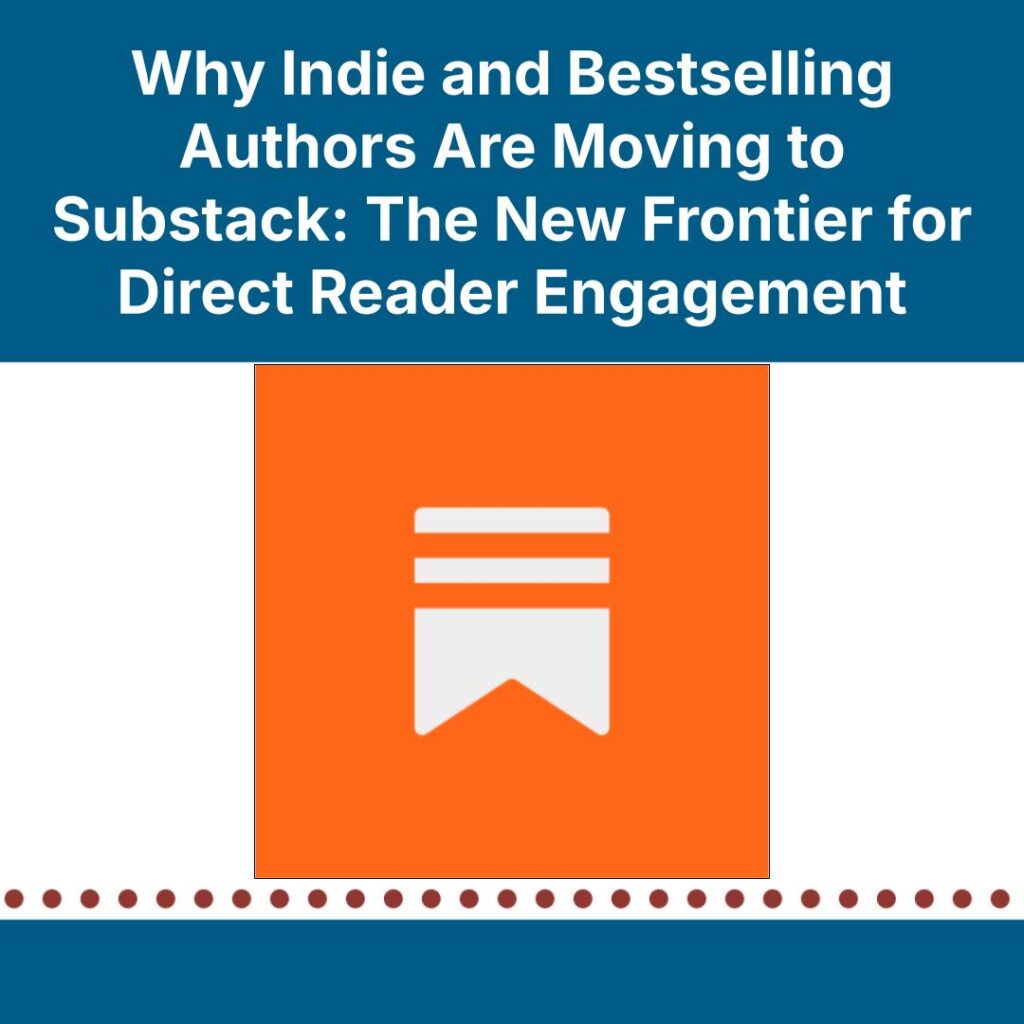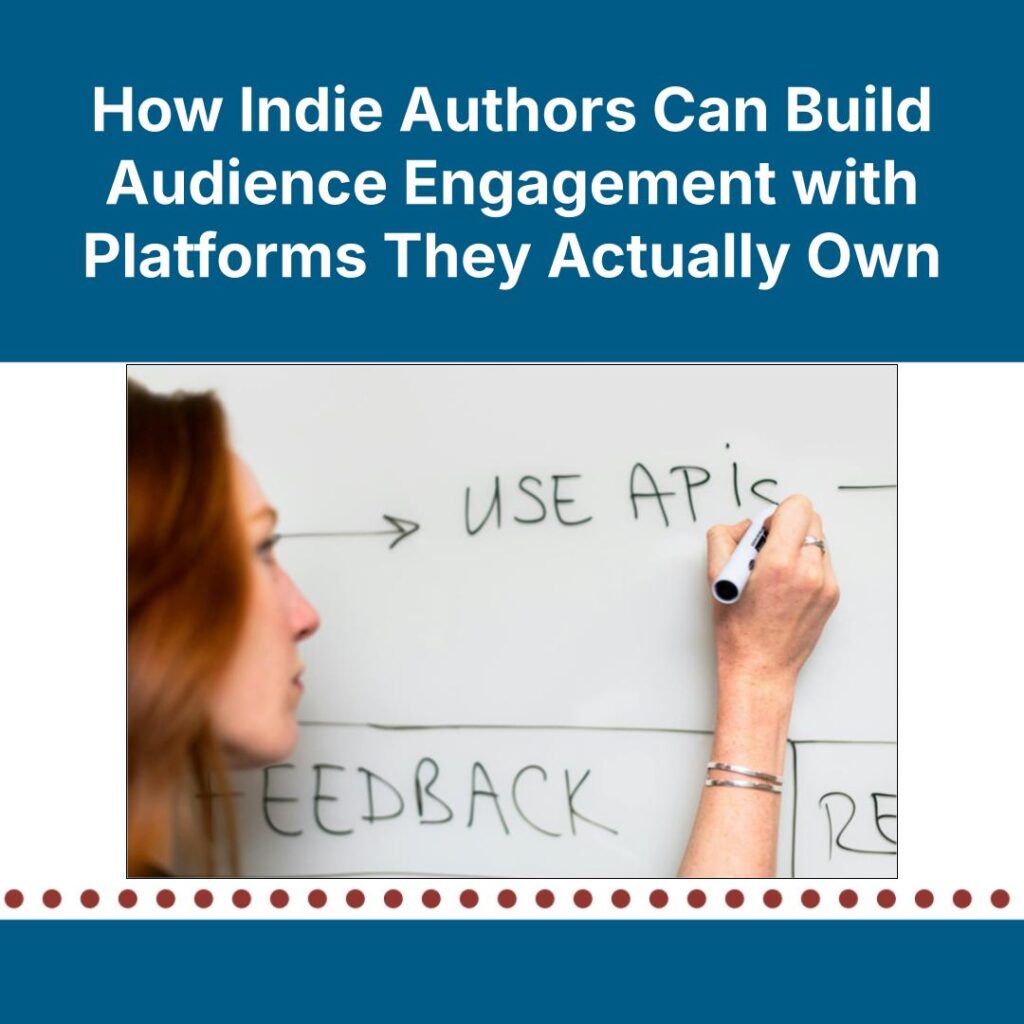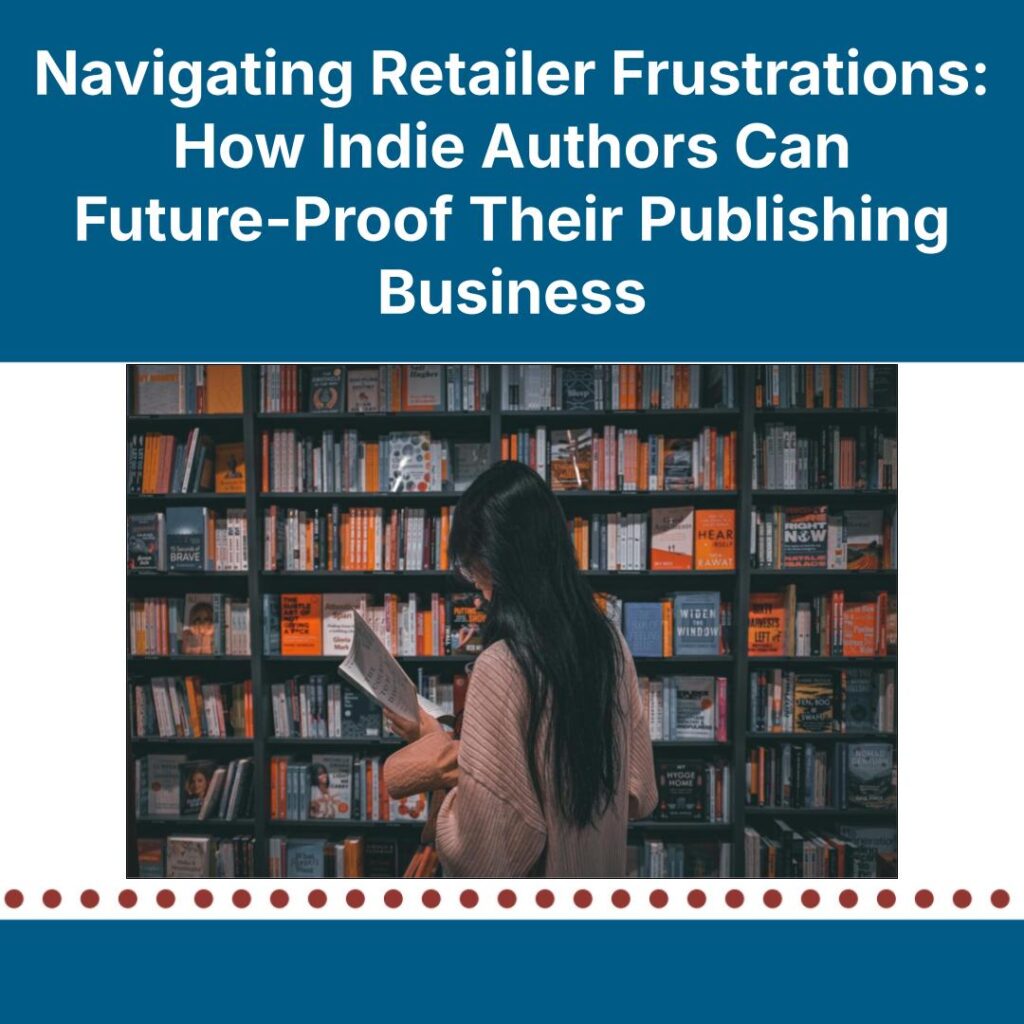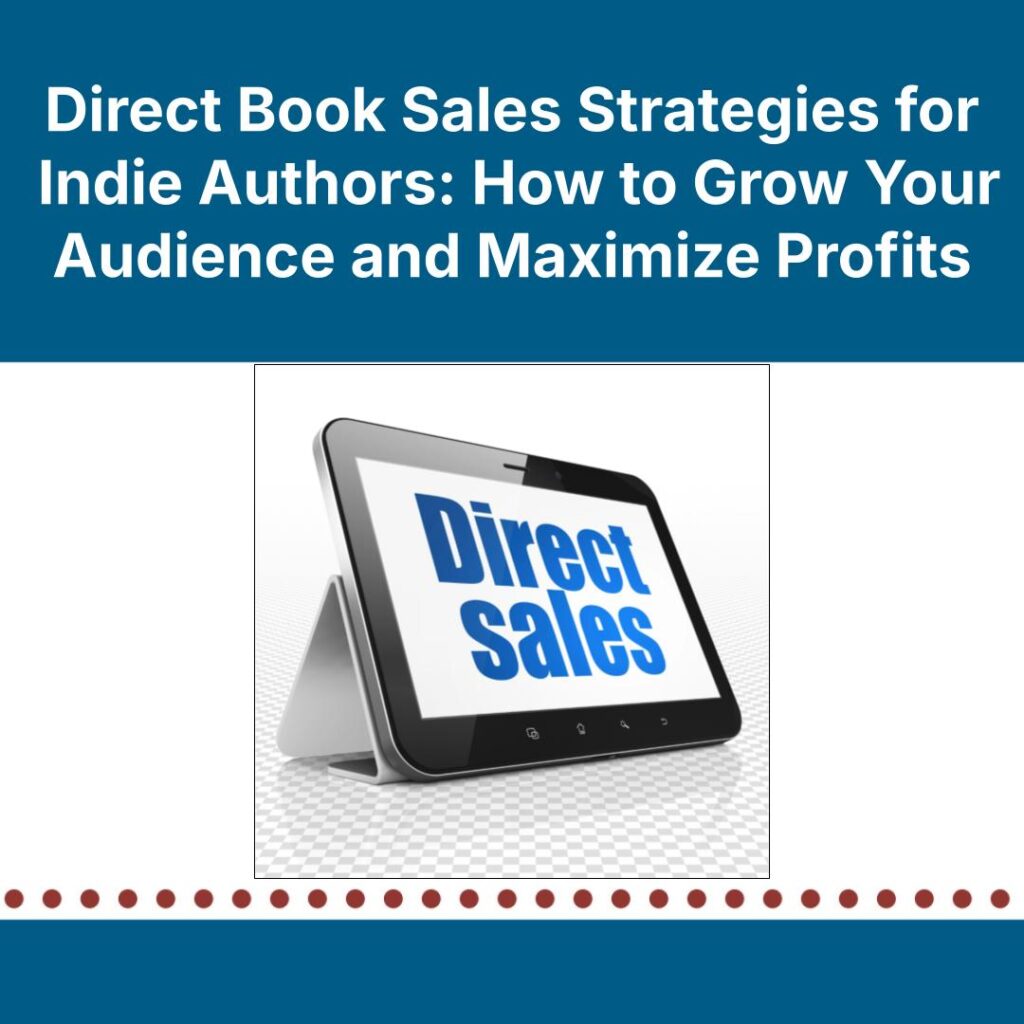Market Smarter
How to Shift Your Strategies to Sell More at Every Stage of Your Book’s Life
As independent authors, we often need to juggle a mix of old and new books, but understanding the difference between your frontlist and backlist—and when to promote each—can be confusing. Although traditional publishers coined the terms “frontlist” and “backlist,” the way they categorize and market those lists can differ from how an indie author does.
The digital era has given indie authors the power to promote any of their books at any time. Still, strategic timing and smart marketing matter. Knowing when a book transitions from frontlist to backlist and how to adjust your marketing strategy accordingly can help boost sales and promote long-term success for your author business.
When Does a Book Move from Frontlist to Backlist?
Every preorder or new release starts its life on the frontlist—fresh, exciting, and ripe for promotion. Typically, a book remains on the frontlist for the first thirty to ninety days; consider the time in which it enjoys placement on Amazon’s New Releases lists and basks in the buzz of launch marketing. After that, many authors will transition the book to their backlist—books previously published but still available for readers to buy—though this certainly isn’t a one-size-fits-all approach, nor should it mean you forget about those books in your marketing strategies.
Although each list will include different titles at a given time and benefit from a different marketing strategy, both are equally essential to building a strong book business. Separating your books into a frontlist and a backlist helps you prioritize and keep your marketing efforts strategic instead of scattered. Think of it this way; your frontlist relies on building momentum, requiring you to push hard and make noise to sell your book to new readers. Your backlist, on the other hand, offers stability between releases and requires you to nurture the titles and optimize your approach to sharing them with an interested audience.
This division also helps avoid marketing burnout. By focusing your energy differently based on where each book is in its life cycle, you maximize returns without exhausting your creative and financial reserves.
So what do these individual marketing strategies look like?
Marketing Frontlist Titles: Buzz, Visibility, and Momentum
Frontlist books often get the red-carpet treatment. When your book is a new release, it is at its most visible, so you may want to invest heavily in promotions such as:
- newsletter announcements and swaps;
- advance reader copy teams;
- paid ads on platforms such as BookBub, Facebook, and Amazon;
- social media blitzes or author takeover events on social media pages related to your release; and
- book signings or launch events.
Focusing on these types of promotions not only helps get your newest book in front of your established reader base; it also helps generate buzz that can expand your audience to new readers eager to find their next favorite author.
Pro Tip: If your book is the first in a series, consider that you’re not just launching a book; you’re launching a franchise. As such, this is the best time to build momentum, drive preorders, and get reviews. As the old saying goes, nothing sells your old books like your newest one. Every new release boosts the visibility of your earlier titles, especially if they’re part of a series.
Marketing Backlist Titles: Evergreen Strategies for Long-Term Sales
Once a book slips into the backlist, your marketing shouldn’t stop. Instead, your energy should shift from promotions that encourage large bursts of sales to those that generate long-term, consistent income. Here are a few ways you can keep these titles selling.
- Promote first-in-series titles as low-priced or permafree loss leaders.
- Rotate promotions seasonally or around themed sales.
- Run occasional ad campaigns on first-in-series or stand-alone books to keep visibility up.
- Use reader magnets and autoresponders to direct readers toward older books.
- Update book covers, blurbs, and categories in keeping with market and/or genre trends.
- If you write series, set up an Amazon Series page to direct readers to the earlier (backlist) books in the series.
Although most of your promotional budget and marketing effort should stay focused on your newest titles, it’s also important to understand the reader lifetime value (RLTV) your backlist represents. This is the amount of profit you gain through sales and/or page reads each time a new reader consumes your backlist. Knowing this key metric can help you determine how much of your budget and effort you want to put into driving readers to your backlist by incorporating one or more of the above marketing tactics into your overall marketing plan.
Backlist titles also shine in bundles, box sets, or special editions. These tactics can offer great return on investment (ROI) with far less pressure than a launch campaign.
How Publishing Speed Affects Marketing Timelines
The speed at which you publish can also affect how long a title remains in the spotlight. If you release a new book every month, last month’s book may quickly become part of your backlist. But if you only publish once or twice a year, those books can remain your frontlist focus for much longer. There’s no hard cutoff; it’s about when your attention, and your readers’, shifts to something newer.
Those who publish on a rapid-release cycle may move through their frontlist quickly. If you release a book every few weeks, the promotional window can be short. Your frontlist cycle might be thirty days or less.
Authors who release slowly can stretch their marketing over a longer period. With fewer books competing for readers' attention, a new release stays fresh longer in readers’ eyes. Adjust your timeline based on your publishing pace, and don’t be afraid to bring backlist titles into the spotlight during release lulls.
Refresh, Repackage, Relaunch: Keeping the Backlist Relevant
As mentioned earlier, your backlist should form the backbone of your steady, long-term income. Alongside specific marketing strategies tailored to keeping up the attention your backlist receives, there are also dozens of ways to give your previously published titles a facelift and further boost their sales.
- Redesign outdated covers.
- Rework blurbs with stronger hooks or keywords.
- Add new formats, such as hardcovers, audiobooks, or translations.
- Launch a rebranded edition or box set.
- Create special collector editions for superfans.
Pro Tip: Try adding a Kickstarter campaign to your backlist marketing plan for things like box sets and special collector editions. Information on how authors are using the platform can be found here: https://www.kickstarter.com/publishing.
If your book doesn’t fit the market visually, it might be time for a refresh. Review Amazon Best Seller lists, or use AI tools like ChatGPT or Claude, to identify books similar to yours, and examine how their covers and blurbs compare. The EBSCO NoveList, which is often available through your local library, can also showcase comparative titles. Once you’ve gotten a feel for the current cover trends, consider whether your covers need a refresh. Republishing a backlist title with a new cover can spark excitement and attention the same way a new release would, as well as increase long-term interest in a series by making it more appealing to modern audiences.
Common Pitfalls: What to Avoid
Ignoring older titles once they’re no longer “new” can be a costly mistake, as these titles are often less expensive to market because the initial production costs are already covered. A well-maintained backlog also encourages binge-reading as new fans find your work. Keeping a book’s metadata updated can also help increase discoverability.
Over-marketing, meaning running ads or saturating social media channels with too many of your books at once, can confuse readers by splitting their attention. You also place yourself in a position where your titles can end up competing against one another.
Forgetting to update your books’ metadata or back matter to include your backlist titles is the marketing equivalent of leaving money on the table. You owe it to yourself, and your backlist, to never give a reader a reason to reach the end of your book and just walk away. Make sure they don’t have to look far to discover more of your books.
Letting series go unfinished and making backlist titles feel incomplete can have a negative impact on your future success. Some readers will avoid authors who have a habit of starting series they never finish.
Strategic focus and maintenance keep your catalog working for you. This is one place where working smarter, not harder, can really pay off.
One Business, Two Strategies
As an author, your frontlist is where the spotlight shines, but your backlist is your real foundation. By shifting your mindset and marketing accordingly, you can build a business that doesn’t depend solely on constant launches. The goal? Create a reader journey that begins with your newest title and guides them smoothly through your entire catalog.
Your frontlist and backlist shouldn’t be at odds with each other; allow them to work in concert to attract readers, and your efforts will pay off—literally. Your frontlist might be a reader’s first exposure to you, but if you market your backlist right, it won’t be their last.
Jenn Mitchell
Jenn Mitchell writes Urban Fantasy and Weird West, as well as culinary cozy mysteries under the pen name, J Lee Mitchell. She writes, cooks, and gardens in the heart of South Central Pennsylvania’s Amish Country. When she’s not doing these things, she dreams of training llama riding ninjas.She enjoys traveling, quilting, hoarding cookbooks, Sanntangling, and spending time with the World’s most patient and loving significant other.

